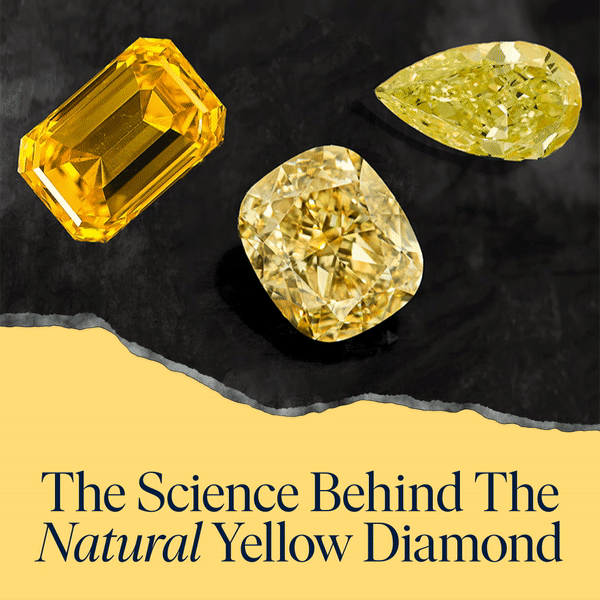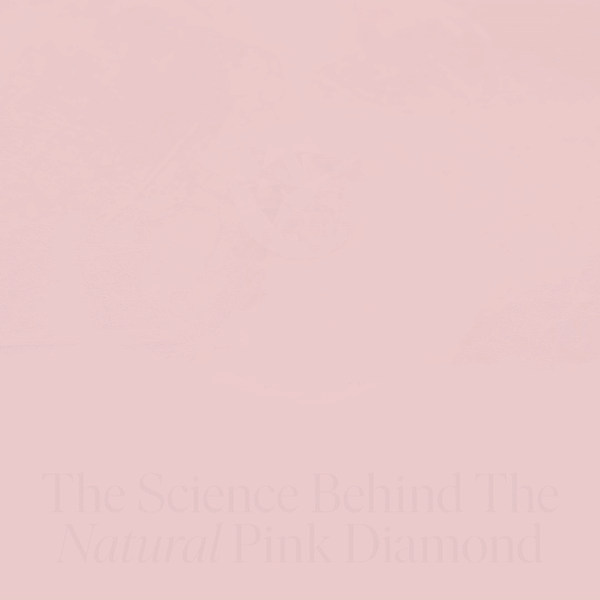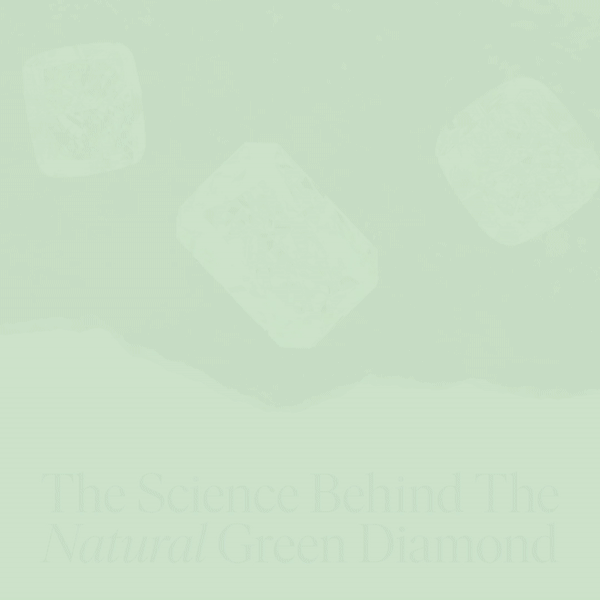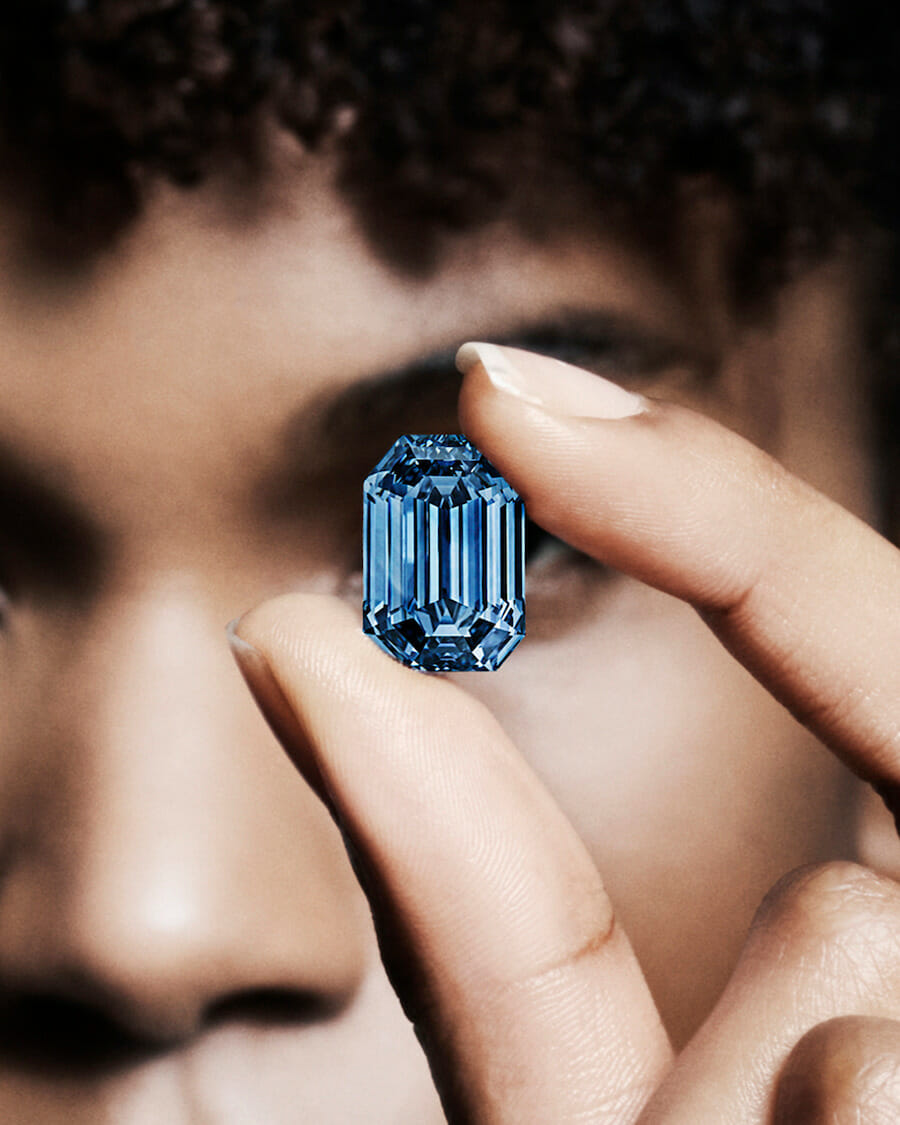The Science of Colored Diamonds
These natural colored diamonds are beautiful, but what makes them simply extraordinary is their extreme rarity.

What are colored diamonds? We often think of natural diamonds as the scintillating colorless or white gems that humans have cherished for thousands of years. Formed deep within the Earth under extreme heat and pressure, these treasures only develop when carbon atoms bond together in a crystal lattice structure. But many forget that certain variables, like the internal trapping of non-carbon atoms or changes in pressure, can alter the stone during a diamond’s formation. This results in diamonds of nearly every color in the rainbow, better known as “fancy-colored diamonds.” This natural phenomenon is one of the rarest and most beautiful things we see in nature.
Yellow Diamonds: More Abundant, But Striking Nonetheless

The most common of all non-carbon atoms found in diamonds is nitrogen. Most diamonds we see contain some nitrogen, but only enough to give yellow hints to otherwise colorless diamonds. In fact, the most common color grading scale for diamonds ranges from D to Z; D is completely colorless, while Z contains enough nitrogen in the right place to give the diamond a visible color.
When enough nitrogen gets properly trapped inside a diamond’s forming crystal structure, the diamond can transcend its Z color classification. Instead, it can be identified as a “fancy-color diamond” that presents itself in an unlimited range of beautiful yellow and brown colors. While still extremely rare, fancy yellows are abundant compared to other fancy-colored diamonds, making their prices comparatively affordable. Buying a fancy yellow diamond can be a perfect foray into the fancy-colored diamond world for an aspiring collector.
Pink Diamonds: The Most Desirable—and Ultra-Rare

Without a doubt, the most desirable natural diamond color is pink. Not only are the full range of very light pink to red diamond hues considered amongst the most beautiful on Earth, but they are some of the rarest miracles of nature we are likely to see. Unlike most other natural diamonds that boast a beautiful color from non-carbon atoms, pink diamonds get their color via a phenomenon called plastic deformation. This process requires extreme pressure within the Earth to compress the diamond’s crystal structure further, causing it to reflect red light. The greater the plastic deformation, the deeper the pink or red hue becomes. However, this additional intense pressure often compromises the diamond’s potential for clarity and carat weight, as the force can cause structural damage, making it very rare to find high-quality and larger stones in this color category.
The majority of pink diamonds are found in one place on Earth: the Argyle mine in remote northwestern Australia. Its closing at the end of 2020 means that pink diamonds are becoming rarer to find and more valuable by the day.
Green Diamonds: A Most Intriguing Fancy Diamond Color

Green diamonds form in perhaps the most interesting way compared to other colored diamonds. Their color results from Earth’s naturally decaying radioactive materials emitting penetrating radiation that knocks electrons or carbon atoms out of their crystal lattice position, causing the stone to reflect green light. Green diamonds are also the only fancy diamonds that achieve their color after they have made the long trip close to the Earth’s surface.
Blue Diamonds: The Rarest and Most Intriguing of Diamond Colors

Blue diamonds are some of science’s rarest and most intriguing diamonds as they only form when the natural element boron gets trapped inside their crystal structure. Boron absorbs yellow light and thus reflects blue light; subtle differences in the concentration and positioning of these boron atoms result in different hues and shades of blue.
Thanks to research by GIA scientists, we now know that the origin of natural blue diamonds is far deeper (up to four times!) inside the Earth than that of most other diamonds. We are lucky enough to have found these beauties through a process called subduction. Subduction is when the Earth’s tectonic plates act like a conveyor belt, moving up and down over hundreds of millions of years and bringing the blue diamonds with them.
Read More: The De Beers Blue Diamond Sells At Sotheby’s For $58 Million
The True Rainbow of Fancy Colored Diamonds
Just like mixing yellow and red paint to create orange, the natural forces that produce color in diamonds can either work independently or combine, resulting in nearly every hue imaginable. While it’s rare, if a diamond undergoes plastic deformation (causing a pink hue) and contains high nitrogen levels (responsible for a yellow hue), it could be an orange diamond. However, the rarity of these natural color diamonds means there simply aren’t enough specimens for scientists to study extensively and definitively pinpoint the cause of every color. This further emphasizes that no two natural diamonds are exactly the same, making each one truly unique.
All natural color diamonds are stunning, but their extreme rarity elevates them to the extraordinary. To put this into perspective, if you gathered all the diamonds one carat and above, regardless of color, recovered in a year, they would only fill an exercise ball. Among those, natural fancy-colored diamonds are incredibly scarce, making up just 0.4% of all diamonds graded over the last two decades. For pink diamonds, their annual yield would fill only a champagne flute. Even rarer, the Natural Color Diamond Association reports that for every 100 Picasso paintings auctioned, only one natural blue diamond surfaces on the market. These gems are a truly remarkable gift from Mother Nature.
